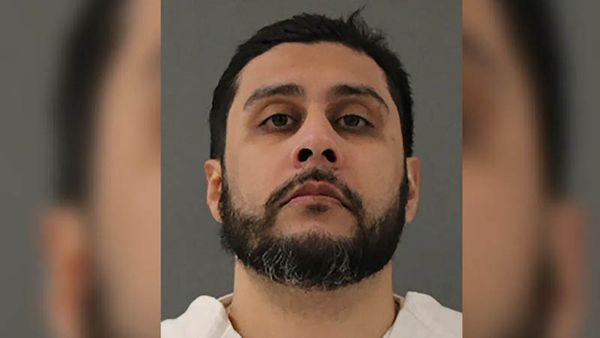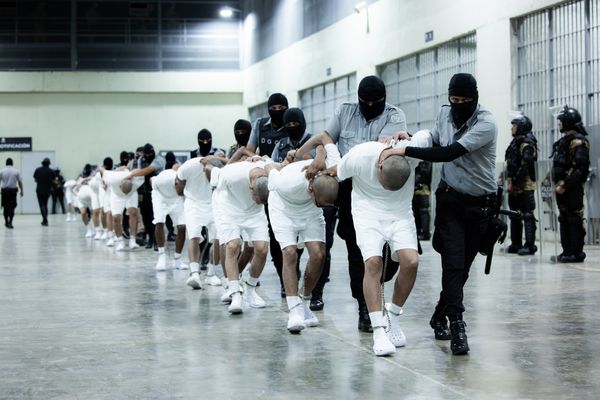
The last time I heard the Rev. James Lawson Jr. speak was in 2011. He was the main attraction at a Beverly Hills event for a progressive organization that counted Lawson among its guiding lights. It was the year of Occupy, and the lines of separation in the country were entirely about class, the haves and have-nots. Inequality was being discussed in most quarters as capitalism that had officially run amok, and everyone wanted to hear what one of the country’s greatest living activists had to say about the moment.
Sitting in a chair across from a moderator, Lawson praised Occupy, lauding the thousands across the nation who were staging sit-ins and pitching encampments to challenge the staggering wealth gap that had produced the 1%. The room cheered.
Then Lawson, his voice rising, dropped a bomb: He told the room that the real root of inequality in America was not capitalism but white supremacy. You could hear a pin drop. Here was an audience of mostly liberal white people who had likely voted for Obama and were not focused on race then, certainly not on whiteness.
But Lawson didn’t care. That’s the thing about him — though rightly venerated as a champion of multiracial cooperation, much like his contemporary Martin Luther King Jr., Lawson had no problem reminding people that cooperation was a response to the antiblack racism that had been with the country since the beginning and informed so many other kinds of injustice. His message that day, and over the decades, was that you had to follow the democratic ideal, fight for it in as many ways that made sense. But you also had to acknowledge what that ideal was up against.
Lawson wanted people to understand that while corporations indeed exploited working people, our collective attitudes were also at fault. Even in liberal Los Angeles, normalizing poor wages for workers of color was tantamount to accepting white supremacy. He was speaking nearly 20 years after the 1992 unrest divided the city, reminding the audience that racial inequality drives class inequality, and always has in the United States. Los Angeles was no exception.
With the death on June 9 of Lawson, the chief architect of nonviolent resistance that defined the Civil Rights Movement, the country lost a link to a pivotal time in its history. But Los Angeles lost the man most responsible for its own reputation for activism. It was Lawson who showed the importance of using the resources of labor unions to advance civil rights, helping to build a modern culture of activism centered on economic justice. In historically anti-union Los Angeles, that was revolutionary.
Forty years ago, Kent Wong of the UCLA Labor Center was a young attorney for the Service Employees International Union when he and a group of up-and-coming activists across various disciplines — a group that included Antonio Villaraigosa, Maria Elena Durazo, Anthony Thigpenn and Karen Bass — began meeting regularly with Lawson at Holman United Methodist Church in West Adams, where he was pastor.
The Holman Group, as it was known, wanted to learn more about Lawson’s experience with nonviolent resistance and how it could be useful in shaping equality movements in L.A. What they learned became core to the many successful justice campaigns that have happened since, especially those involving worker rights.
Wong recalls how hotel and home care workers adopted the tactics of disruption, civil disobedience and hunger strikes to build not just bargaining power, but a sense of a larger civic mission in a city that discouraged such a thing, to put it mildly. A key campaign was Justice for Janitors, the 1990 SEIU drive to organize a largely immigrant Latino workforce that many thought couldn’t be organized. The campaign’s success was the catalyst for a new, aggressive labor movement in Los Angeles that never looked back, even as the power of unions nationwide diminished.
The energy of the modern labor movement stretches back to 1968 and the Black sanitation workers’ strike in Memphis, the last campaign King supported, at Lawson’s request. After King’s assassination Lawson led the strike to a successful conclusion, against great odds. “He was an extraordinary mentor and leader who basically replicated here what he’d done with the sanitation workers,” said Wong.
Lawson came to L.A. in 1974 to pastor Holman, which he did for 25 years. After he retired in 1999, Wong asked if he’d be interested in team-teaching a class on labor movement history and practice at the UCLA Labor Center. He didn’t assume the great man would have the time or inclination, but Lawson immediately agreed: The class ran for 22 years, almost as long as he’d been in the pulpit. And it produced alumni — second- and third-generation Holman groups — that continue to drive progressive L.A.’s equality movements in a city where on any given day, equality feels as elusive as it feels possible.
Among Los Angeles’ Black leadership, Lawson was in a category of his own, highly respected but not often replicated. While organization leaders struggled with the politics of black solidarity with Latinos and other groups, Lawson saw the cause of racial justice as naturally and inextricably linked to justice for immigrants, the LGBT community, women. Part of that was his faith, but another part was a conviction, strengthened by his long and often brutal experience in the trenches, that equal treatment was something everyone in America deserved. That treatment was more urgent for Black folks because of their history, but it was precisely that urgency that fueled other movements, from gay rights to women’s liberation.
The Black justice campaign that started with a multiracial group of college students sitting at Nashville lunch counters affirmed a core truth for Lawson: Democracy belonged to Black people; therefore, it belonged to everyone.
Lawson never lost sight of that. The most significant nonviolent protest of the 21st century, he said, was Black Lives Matter. Despite conservative critics who called protesters criminals, just as they did in the South in the early ’60s, BLM demonstrations were overwhelmingly peaceful, something owed to Lawson’s influence on activism the last 60 years. The movement’s blend of a moral message (Black Lives Matter is an existential variation of “I Am a Man,” the Lawson-inspired slogan of the Memphis sanitation strike), uncompromising mission and organizational discipline “was very much embedded in Lawson’s ideology,” Wong said.
Another local expression of that ideology was Clergy and Laity United for Economic Justice — CLUE — a group of progressive faith leaders Lawson co-founded in the late ’90s to advocate for worker rights and fair pay. The push to mandate a living wage, first adopted by the L.A. City Council in 1997, was another kind of movement catalyst that lives on in actions such as California’s recently enacted law to pay fast-food workers $20 an hour. Vivian Rothstein, a veteran of the Civil Rights Movement and a CLUE board member, said Lawson could so easily connect movements and causes because they were all part of a single humanistic vision that can only be described as holy. “Nonviolence is based on love, and that’s what transforms,” said Rothstein. “Rev. Lawson didn’t have to worry about politics. He was a total believer, not an idealogue.
“The big thing was that he brought the whole Southern civil rights vision, the church-based activism, to the labor movement,” she said. “And he brought it to L.A., of all places.”







